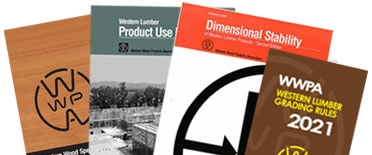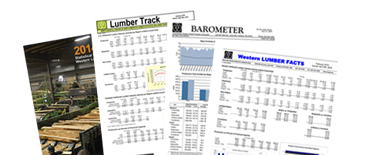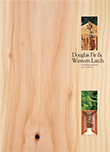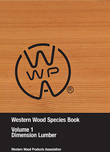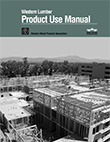
Douglas Fir & Western Larch
This species combination has the highest modulus of elasticity (MOE or E) value (the stiffness factor) of all North American softwoods. In strength properties, DF-L has the highest ratings of any Western softwood for fiber stress in bending, tension parallel to grain, horizontal shear, compression perpendicular and compression parallel to grain.
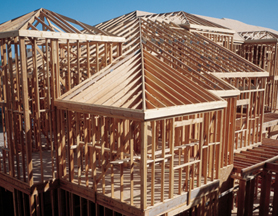 Douglas Fir (DF) is often the standard against which all other framing species are measured. Its strength combined with a superior strength-to-weight ratio, high specific gravity (for excellent nail and metal truss plate-holding capability), excellent dimensional stability (giving "green" DF products the ability to season well in service), the moderate decay resistance of its heartwood, and documented excellent performance record against strong forces resulting from winds, storms and earthquakes, have given Douglas Fir its reputation. It is also tight knotted and close grained, adding the bonus of beauty to its structural capabilities. Color, grain pattern, knot size and type are addressed in the rules for appearance grades.
Douglas Fir (DF) is often the standard against which all other framing species are measured. Its strength combined with a superior strength-to-weight ratio, high specific gravity (for excellent nail and metal truss plate-holding capability), excellent dimensional stability (giving "green" DF products the ability to season well in service), the moderate decay resistance of its heartwood, and documented excellent performance record against strong forces resulting from winds, storms and earthquakes, have given Douglas Fir its reputation. It is also tight knotted and close grained, adding the bonus of beauty to its structural capabilities. Color, grain pattern, knot size and type are addressed in the rules for appearance grades.
Douglas Fir is the major species produced in the West, with more volume shipped than any other species, and its sterling performance history is recognized the world over. It is abundant and widely available in second and third-growth stands yielding products in multiple grade classifications: dimension and other framing products, engineered structural products such as MSR, finger-jointed, and glu-laminated products, high (clear) to low (economy) grade appearance products, and industrial and specialty grades. DF doors, manufactured from products in the Factory & Shop grade classification, are renowned for their beauty and performance.
Douglas Fir's light rosy color is set off by its remarkably straight and handsome grain pattern. Sapwood is white to pale yellow; heartwood is russet with high contrast between the springwood and summerwood. While similar, Western Larch is slightly darker in color, with the heartwood being a reddish brown and the sapwood a straw brown.
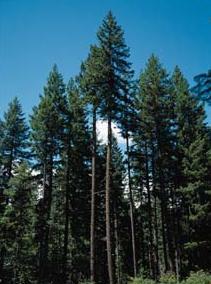
Douglas Fir trees are among the tallest on the continent, second only to coastal redwoods. They average from 150' to 200' in height, from 2' to 6' in diameter and are found at elevations ranging from sea level to 6,000 feet.

